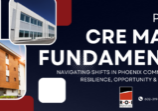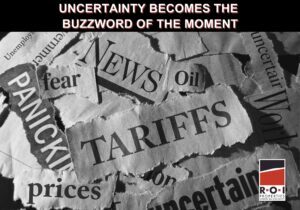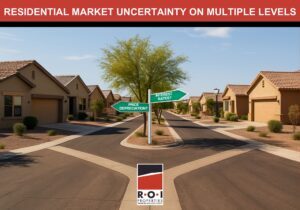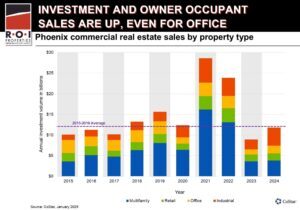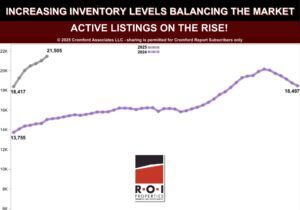As we head into the end of the first quarter, three CRE trends bear watching in the Phoenix market—offering examples of the ever-changing landscape to which landlords and investors need to adapt.
CRE Trend #1: Default Concerns Rising
Concerns about potential defaults on the multifamily side have been lingering for months, and we are finally seeing notices of trustee sales. While the One Camelback development in the fall was the highest-profile situation so far, we are closer to the beginning of this CRE trend than the end. Vacancies are up and average asking rents contracted 3.7% YOY through November en route to the second-weakest performance among Yardi Matrix’s top 30 metros. The Greater Phoenix CRE market has a significant quantity of undelivered multifamily inventory under construction that’s on peoples’ minds—including lenders. About 33,000 units are in planning and/or under construction.
CRE Trend #2: Affordable Multifamily
While the in-the-pipeline development has been dominated by class A properties in recent years, we are starting to see more affordable product emerge. Public-private partnerships, sometimes known as P3, foster development via nonprofit organizations funded with bonds, public funds or government monies through the state or city. P3 initiatives are prominent in the West Valley and we are seeing a proliferation of affordable builders and nonprofits that are focused on Low Income Housing Tax Credit (LIHTC) projects. The overall trend dovetails with Gov. Katie Hobbs’ focus on affordable housing, and the $49 million commitment to affordable housing developers announced in January by the Arizona Department of Housing (ADH).
One recent example is how Dominium structured financing for the construction of two developments in Glendale totaling 605 units. In addition to $86.1 million in Freddie Mac 4% LIHTC tax-exempt loans, the developer received a mix of P3 funding: equity bridge loans from Merchants Bank and construction loans from Barclays Capital, bonds from the Arizona Industrial Development Authority with U.S. Bank as trustee, and construction loans from the ADH, Maricopa County Human Services Department, and City of Glendale.
CRE Trend #3: Ground Leases
Finally, we are seeing more deals structured as ground leases. As our community matures, there are fewer available key parcels located at major cross streets or with desirable frontage. With a ground lease, the owner of a property might lease the undeveloped commercial land to a third-party investor, while retaining the fee interest. Then, the investor may work with a build-to-suit developer to build a Chick-fil-A, Walgreens, or Raising Cane’s.
Note that the trend isn’t limited to retail: In recent weeks, we have also seen ground leases used for the Arizona Athletic Grounds sports complex in Mesa and for a medical office property on the Banner Thunderbird Medical Center campus in Glendale.
While many corporate owners used to require full fee ownership of the real property, many are now compromising and settling on long-term land lease interests, to secure the location. Historically, there had been very little investor appetite for that type of transaction, since you’re only getting a slice of interest in the property rather than the whole thing. But as well-located land becomes harder to come by, it requires creativity. Similarly, it takes a mindset change on the part of a landowner: Rather than selling a property outright, a ground lease offers the potential for a long-term annuity income stream.
Want to Learn More about the Potential of Ground Leases? Ground leases require a mix of creative planning and thinking along with legal knowledge to create a structure that maximizes the value of your real estate assets. Contact the R.O.I. Properties team to learn more about this increasingly popular trend: [email protected] or 602-319-1326.
Let us help you find your perfect space!
Find a Commercial Property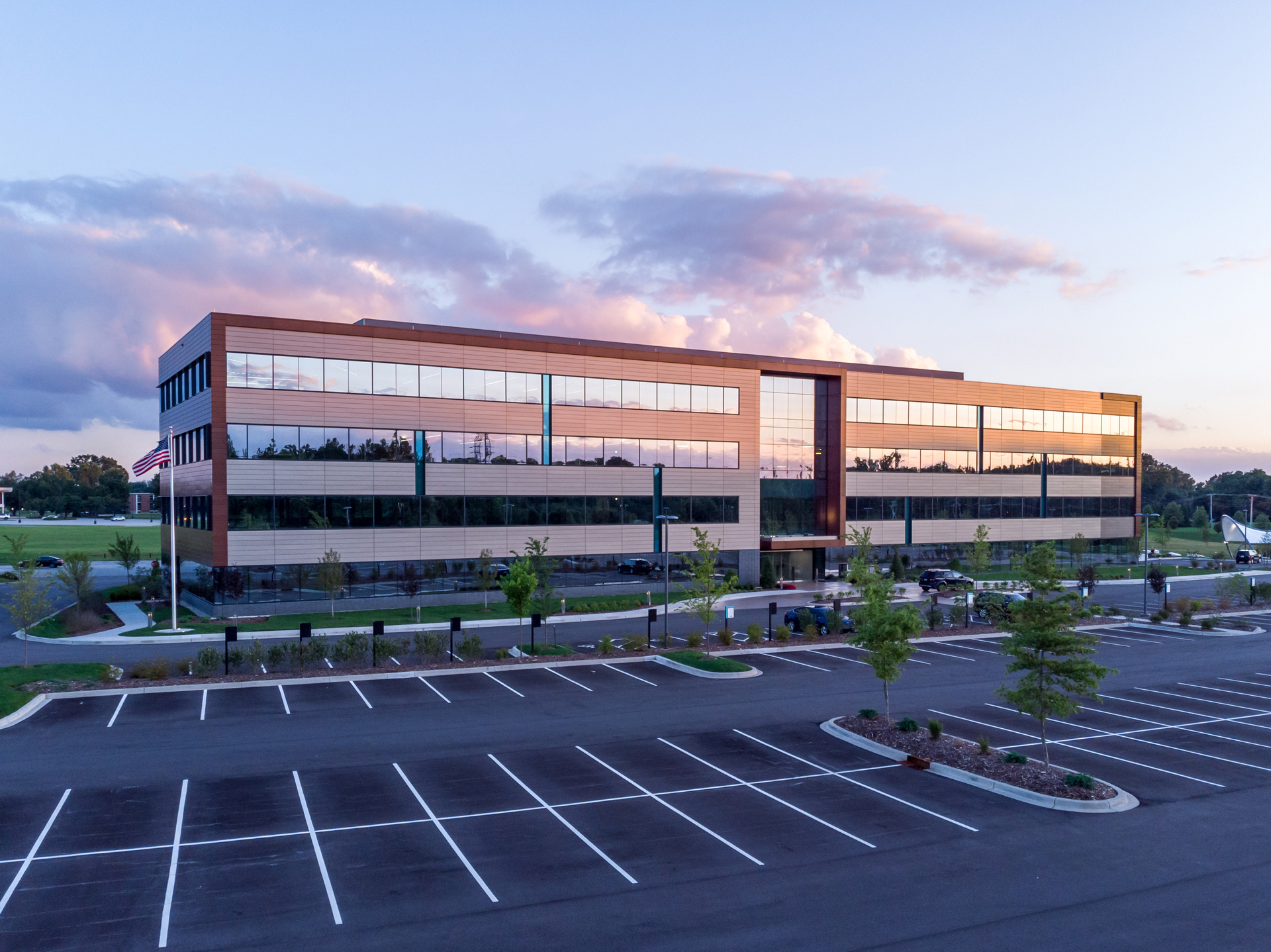
View this post on Instagram



